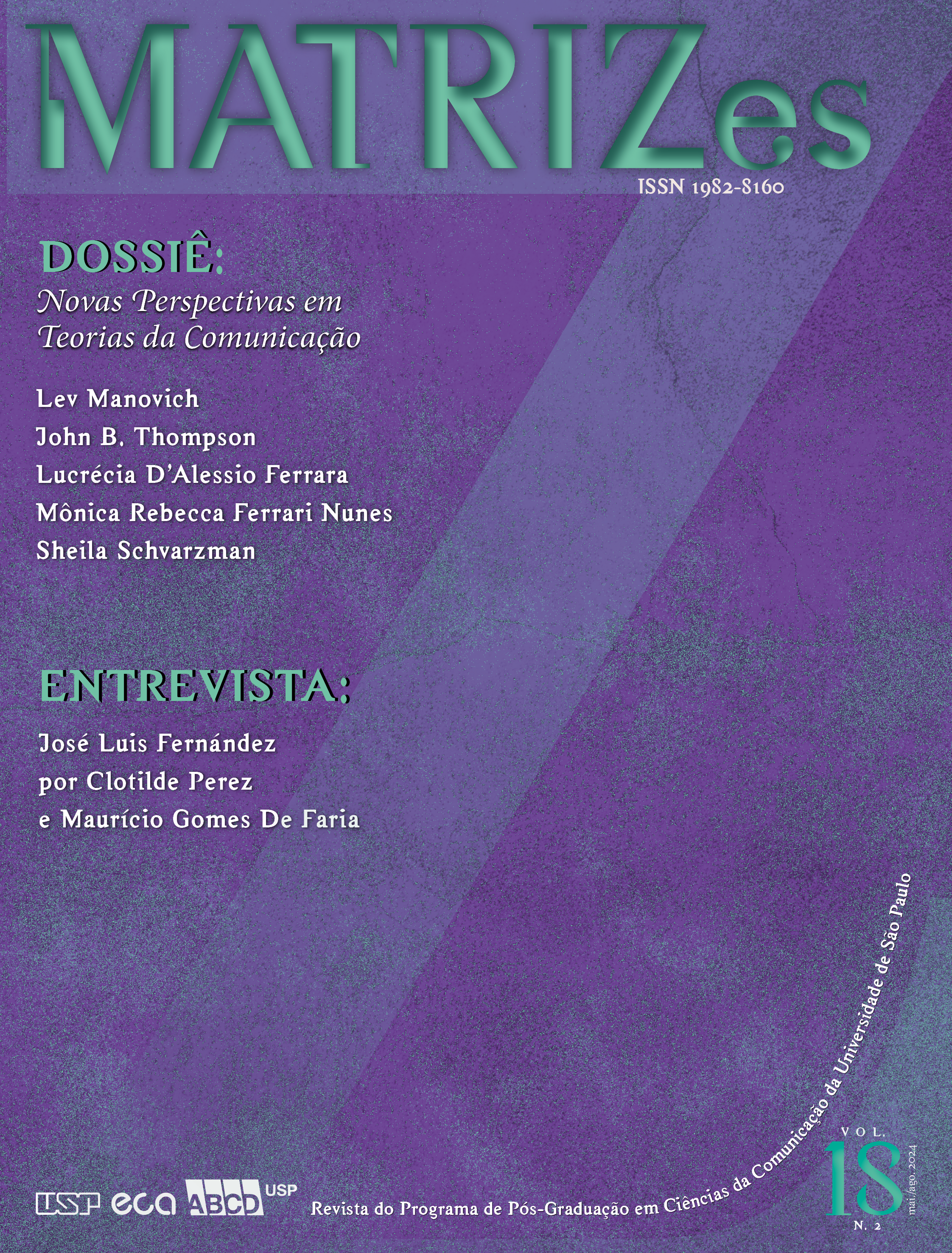Separate and Reassemble: Generative AI through the lens of art and media histories
DOI:
https://doi.org/10.11606/issn.1982-8160.v18i2p7-18Palabras clave:
AI image generation, digital media, neural networks, computer graphics, generative AIResumen
AI image generation represents a logical evolution from early digital media algorithms, starting with basic paint programs in the 1970s and advancing to sophisticated 3D graphics and media creation software by the 1990s. Early algorithms struggled to simulate materials and effects, but advances in the 1970s and 1980s led to realistic simulations of natural phenomena and artistic techniques. Generative AI continues this trend, using neural networks to combine and interpolate visual patterns from extensive datasets. This method of digital media creation underscores the modular and discrete nature of computer-generated imagery, distinguishing it from traditional optical media.
Descargas
Referencias
ACM SIGGRAPH. (2022). SIGGRAPH ‘22: ACM SIGGRAPH 2022 Conference Proceedings.
Barla, N. (2024, May 14). How to visualize deep learning models. Neptune.ai. https://neptune.ai/blog/deep-learning-visualization.
Bokov, A. (2014). VKhUTEMAS training. Pavilion of the Russian Federation at the 14th International Architecture Exhibition.
Bokov, A. (2021). Avant-garde as method: Vkhutemas and the pedagogy of space, 1920-1930. Park Books.
Corel Painter. (2024, July 5). In Wikipedia. https://en.wikipedia.org/wiki/Corel_Painter.
Manovich, L. (1992). Assembling reality: Myths of computer graphics. Afterimage, 20(2), 12-14.
Manovich, L. (2002). The language of new media. MIT press.
Manovich, L. (2013). Software takes command. Bloomsbury Academic.
Manovich, L. (2018). AI aesthetics. Strelka Press.
Mitchell, W. J. (1996). City of bits: Space, place, and the Infobahn. MIT press.
Olah, C., Mordvintsev, A., & Schubert, L. (2017, November 7). Feature visualization: How neural networks build up their understanding of images. Distill. https://doi.org/10.23915/distill.00007.
Podell, D., English, Z., Lacey, K., Blattmann, A., Dockhorn, T., Müller, J., Penna, J., & Rombach, R. (2023). SDXL: Improving latent diffusion models for high-resolution image synthesis. arXiv. https://arxiv.org/abs/2307.01952.
Smith, A. R. (2001). Digital paint systems: An anecdotal and historical overview. IEEE Annals of the History of Computing, 23(2), 4-30. https://doi.org/10.1109/85.929908.
Smith, A. R. (2021). A biography of the pixel. MIT Press.
Vkhutemas. (2020, June 25). Main course. https://www.vkhutemas.ru/en/structure-eng/faculties-eng/main-course/
Publicado
Número
Sección
Licencia

Esta obra está bajo una licencia internacional Creative Commons Atribución-NoComercial-CompartirIgual 4.0.
Los autores que publican en esta revista aceptan los siguientes términos:
- Los autores mantienen los derechos de autor y otorgan a la revista el derecho a la primera publicación, con el trabajo licenciado simultáneamente bajo la Creative Commons Attribution License (CC BY-NC-SA 4.0) que permite compartir el trabajo con reconocimiento de autoría y publicación inicial en esta revista para fines no comerciales.
- Los autores están autorizados a asumir contratos adicionales por separado, para la distribución no exclusiva de la versión del trabajo publicado en esta revista (por ejemplo: publicación en repositorio institucional o como capítulo de libro), con reconocimiento de autoría y publicación inicial en esta revista.






















